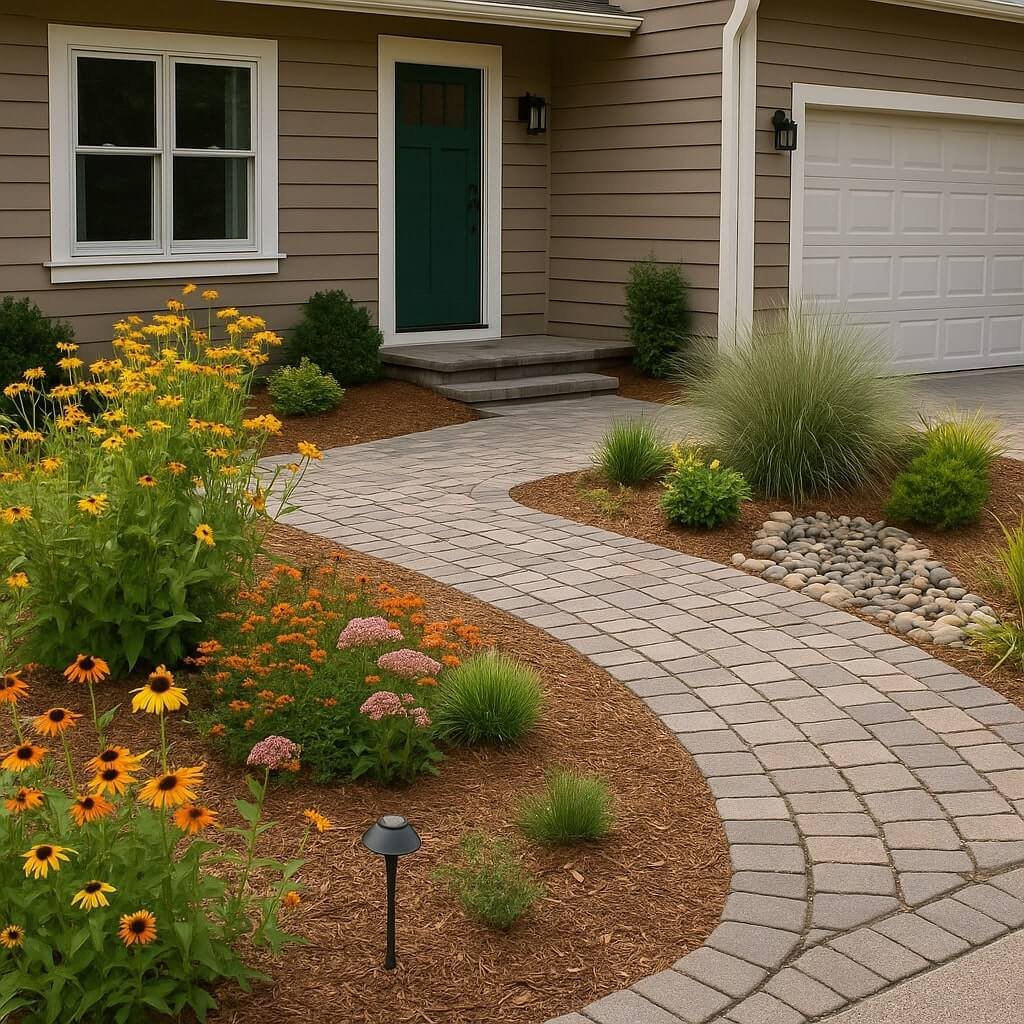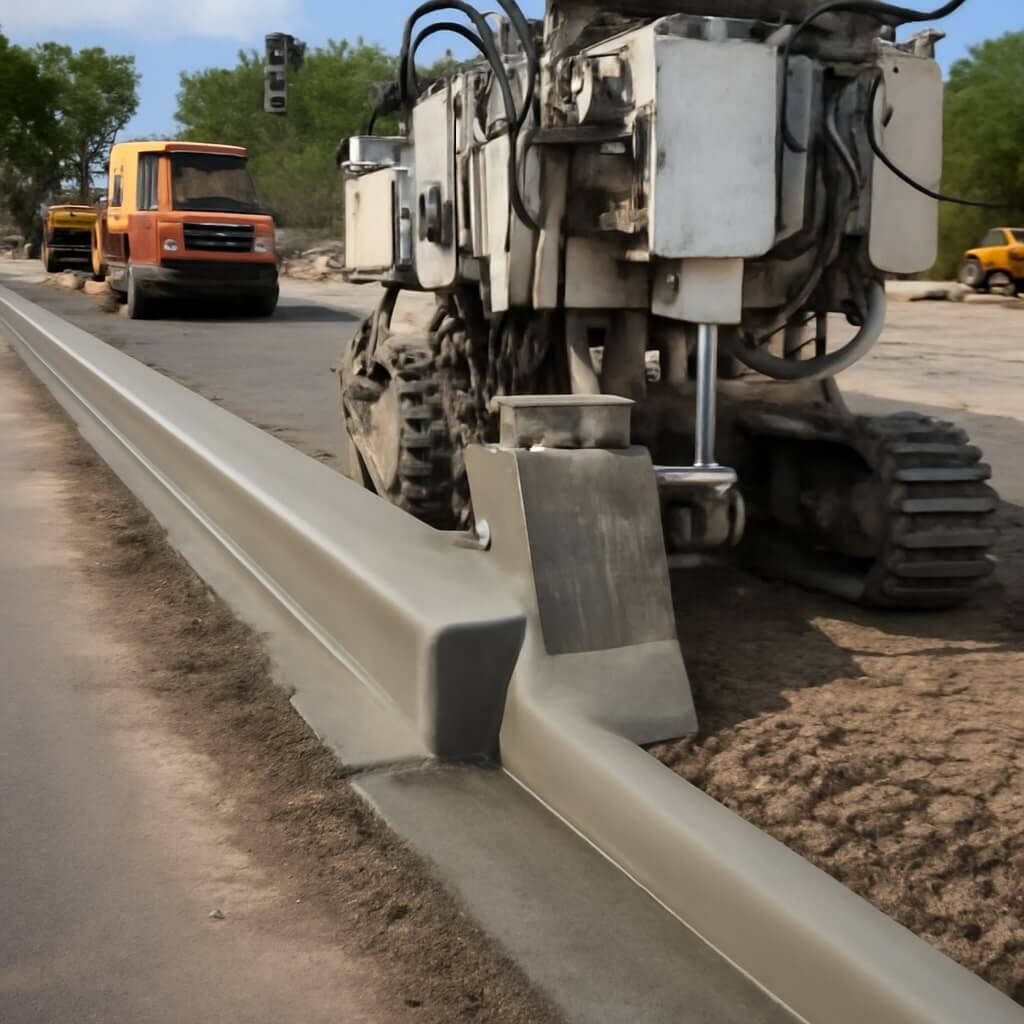Curb appeal isn’t just about aesthetics—it’s the first impression your home makes on guests and neighbors. But in the eco-conscious age, it also reflects your environmental values. Sustainable curb improvement methods help you reduce waste, energy use, and maintenance costs, all while boosting property value.
An eco-friendly exterior can seamlessly blend beauty with sustainability, showcasing green elements like native gardens, solar lighting, and smart irrigation systems.
Principles of Sustainable Exterior Design
Designing a sustainable home exterior requires careful planning and long-term thinking. Core principles include:
- Energy Efficiency: Choose lighting, irrigation, and features that consume minimal energy.
- Resource Conservation: Use recycled, reclaimed, or locally sourced materials.
- Water Stewardship: Install systems and landscapes that minimize water use.
- Biodiversity: Encourage local plant and insect life.
Following these principles supports both the environment and your wallet over time.
Using Native Plants for Landscaping
Benefits of Native Flora
Native plants are naturally adapted to your region’s soil and climate. This means they require less water, fewer pesticides, and virtually no synthetic fertilizers. Plus, they support local pollinators like bees and butterflies.
Reducing Water Waste
Water is precious, especially in drought-prone areas. Native landscaping can cut outdoor water use by more than 50%. Xeriscaping, the art of landscaping with minimal water, is a top trend among eco-conscious homeowners.
Installing Permeable Pavers
What Are Permeable Surfaces?
Permeable pavers are paving materials designed to allow water to pass through them, unlike traditional concrete or asphalt. They help reduce stormwater runoff and recharge groundwater.
Stormwater Management Advantages
- Prevents erosion and flooding
- Reduces pressure on city sewer systems
- Filters pollutants before they reach waterways
Materials include: porous concrete, gravel, and recycled brick.
Solar Lighting for Pathways and Driveways
How Solar Lights Cut Energy Bills
Solar-powered lights charge during the day and illuminate your yard at night without adding to your electricity bill. They’re easy to install and require little maintenance.
Placement Tips for Efficiency
- Position in direct sunlight
- Space evenly along paths and walkways
- Use motion sensors for added security and energy savings
Solar lighting offers a brilliant balance of function and sustainability.
Reclaimed and Recycled Building Materials
Where to Source Sustainable Materials
Reclaimed wood, salvaged bricks, and recycled metal can all be utilized for fences, benches, borders, and other purposes. Check local architectural salvage yards or Habitat for Humanity ReStores.
DIY Projects Using Reclaimed Wood and Stone
- Raised garden beds
- Rustic benches
- Planters and birdhouses
These materials reduce landfill waste and give your home a unique, earthy aesthetic.
Green Roofs and Living Walls
Environmental Benefits
Green roofs and living walls aren’t just for commercial buildings. They:
- Act as natural insulators
- Reduce stormwater runoff
- Improve air quality
- Support pollinators
Cost vs. Long-Term Savings
While initial setup can be costly, the savings in heating, cooling, and maintenance quickly add up over the years.
Smart Irrigation Systems
Types of Eco-Friendly Irrigation
- Drip Irrigation: Minimizes evaporation and runoff
- Soaker Hoses: Efficient and affordable
- Rain Sensors: Shut off irrigation during wet weather
Integration With Native Landscaping
Smart irrigation works best when paired with drought-tolerant, native plantings. You save water without sacrificing beauty.
Low-VOC Paints and Finishes
Health and Environmental Impact
Low-VOC (volatile organic compound) paints release fewer harmful fumes, improving indoor and outdoor air quality.
Choosing the Right Products
Look for certifications like Green Seal or Greenguard Gold. Use these paints on fences, doors, and exterior trims to make your home both safer and greener.
Eco-Friendly Fencing and Decking Options
Bamboo, Composite, and Recycled Options
- Bamboo: Fast-growing and highly renewable
- Recycled Plastic Lumber: Durable and low-maintenance
- Composite Wood: Made from wood fiber and plastic waste
Maintenance and Longevity Tips
Keep surfaces clean and reseal as necessary to extend lifespan. Eco-friendly doesn’t mean fragile—it often lasts longer than traditional materials!
Frequently Asked Questions (FAQs)
How much does sustainable curb improvement cost?
It varies. While some upgrades, like native plants, are low-cost, others, like solar lights or green roofs, require upfront investment but offer savings over time.
Can I do these improvements myself?
Yes! Many projects, such as installing solar lights or native plant landscaping, are ideal for DIY enthusiasts.
How do I maintain eco-friendly landscaping?
Use organic mulches, prune regularly, and water during cooler parts of the day to conserve moisture.
Will these improvements increase my home’s value?
Definitely. Eco-friendly upgrades are attractive to buyers and can boost curb appeal and resale price.
Are permeable pavers durable?
Yes. When properly installed, they can last as long as or longer than concrete.
Is it worth switching to low-VOC paints?
Absolutely. They protect both your health and the environment, with little compromise in quality or appearance.
Conclusion: Transforming Your Curb Sustainably
Sustainable curb improvement methods aren’t just trendy—they’re essential. From native plants and smart irrigation to solar lighting and recycled materials, each choice you make builds a healthier, more beautiful world. Whether you’re starting small or going big, your eco-friendly upgrades will make a lasting impact.




